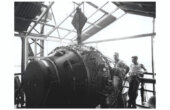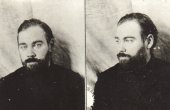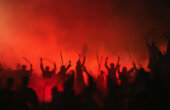Death Dust: The Little-Known Story of U.S. and Soviet Pursuit of Radiological Weapons
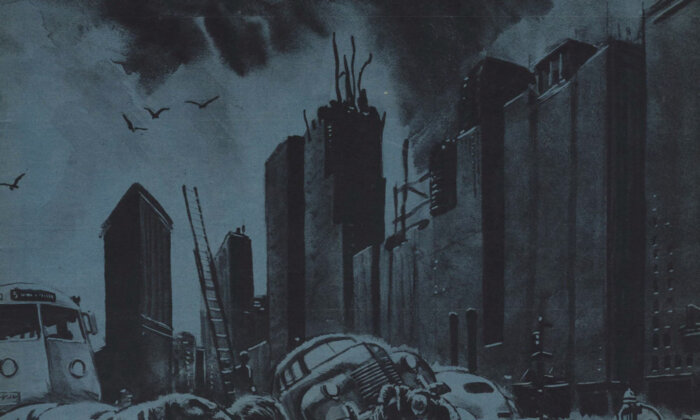
For decades, the thought of radiological weapons has conjured terrifying images of cities covered in “death dust.” Classified as a weapon of mass destruction — alongside chemical, biological, and nuclear weapons — it has remained a point of mystery as to why these devastatingly indiscriminate weapons were not pursued in earnest by more state and non-state actors alike.
What did early radiological weapons (RW) programs look like? How and why did they arise, and what accounts for their ultimate demise? Aside from a handful of known cases, why have RW programs not proliferated with the same alacrity as other weapons programs?
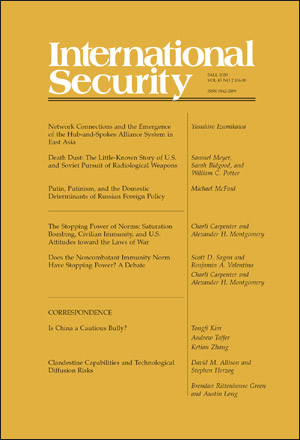
Thanks to the rigorous and rich historical work of Samuel Meyer, Sarah Bidgood, and William Potter of the Middlebury Institute of International Studies at Monterey, we now have more answers. Focusing on the United States and Soviet Union in the 1940s and 1950s, the authors, in a recent study published in the journal International Security, trace the unique origins of these RW programs, as well as explain why they were subsequently abandoned. Their study, “Death Dust: The Little-Known Story of U.S. and Soviet Pursuit of Radiological Weapons,” reveals a fascinating web of causes, including organizational and bureaucratic politics, international competition, economic and technological constraints, and even the powerful initiatives of well-placed individuals.
While the authors’ work examines the past, it speaks directly to the present and future trajectory of RW programs. If you are interested in military innovation, the history of weapons of mass destruction, the sociology of technology, and science fiction (yes, science fiction!), the exchange featured below is for you.
Morgan Kaplan: First things first, what are radiological weapons? Do any countries or non-state actors have them today?
Samuel Meyer, Sarah Bidgood, and William C. Potter: We define a radiological weapon as one intended to disperse radioactive material in the absence of a nuclear detonation. Although our focus in the article is on state-level programs, the definition is consistent with devices usually associated with non-state actors. To the best of our knowledge, no state or non-state actor currently possess RW, although a number of states previously have produced and tested them (e.g., the United States, the Soviet Union, and Iraq).
MK: Radiological weapons seem to have some sort of history in science-fiction writing. What’s the relationship between the science-fiction on radiological weapons and the real thing?
The authors: We were struck in the early phase of our research by the parallelism in time between science fiction accounts of RW (“death dust”) and U.S. government consideration of very similar weapons. The concept of RW appears to have been the brainchild of John W. Campbell, a prolific science fiction writer and editor, who commissioned Robert Heinlein to write the short story “Solution Unsatisfactory.” The story appeared in the May 1941 issue of Astounding Science Fiction under the pseudonym Anson MacDonald. Campbell also published a non-fiction account of RW in the July 1941 cover story of the entertainment magazine he edited (PIC) under the sensationalist title “Is Death Dust America’s Secret Weapon?”
The report identified three possible military aspects of atomic fission, the first of which was “production of violently radioactive materials … carried by airplanes to be scattered as bombs over enemy territory.”
At almost the identical time — May 1941 — the first reference to RW appeared in a U.S. government document: the Report of the Uranium Committee. The report identified three possible military aspects of atomic fission, the first of which was “production of violently radioactive materials … carried by airplanes to be scattered as bombs over enemy territory.” (The other two possible applications noted in the report were “a power source on submarines and other ships” and “violently explosive bombs.”)
MK: Your article is about the rise and fall of radiological weapons programs in the United States and the Soviet Union. What were the primary drivers of the radiological programs in these countries, and why did they ultimately fade away?
The authors: Technological advances were among the major drivers of RW programs in both the U.S. and the Soviet Union, and RW were initially pursued in tandem with nuclear weapons and chemical weapons (CW) programs. The anticipated promise of RW as a weapons innovation, however, never materialized in either country due to a combination of factors, including technical difficulties in the production and maintenance of the weapons, diminution in the perceived military utility of RW relative to both CW and nuclear weapons, and low threat perceptions about adversary RW capabilities.
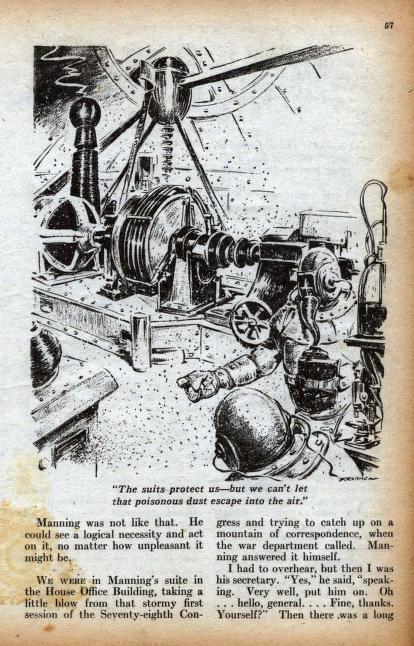
MK: What are the main similarities and differences between the rise and fall of radiological weapons in the United States and the Soviet Union?
The authors: The demise of the U.S. RW program turned, in part, on the choice of the radioisotope for the weapon: tantalum-182 and the absence of a dedicated production infrastructure (priority was given to the production of plutonium-239, the fissile material for most of the nuclear bombs then being produced). Poor U.S. intelligence about the magnitude of the Soviet RW program also reduced the perceived need to invest more in the U.S. program. As noted above, while a number of the same drivers were present in both the U.S. and Soviet programs, there were never high-level proponents of RW in the U.S. comparable to those in the Soviet Union. By 1958 these senior Soviet advocates had passed from the scene, and the Soviet RW program also faded.
MK: In the title of the article, you say that this story is “little known” until now. Why is that? Why has it taken so long for us to understand the history of radiological weapons?
The authors: We don’t have a compelling explanation for the paucity of research on the U.S. program, although there are probably a few factors: the relatively short life of the program, a fixation by historians on the dominant weapons innovation in the 20th century — namely, nuclear weapons — and the post-9/11 tendency to conceive of RW primarily in terms of non-state actors. The absence of research on the Soviet RW program is a function of the limited number of analysts with Russian proficiency, the infrequent reference to the program in Soviet and Russian historical accounts, and the difficulty of securing relevant source materials. Interestingly, there is even less written about the British RW program — the focus of a forthcoming study.
MK: Your research has led you to some fascinating stories and pieces of data. What’s the strangest or most interesting piece of history you learned from this research?
The authors: It is hard to single out only one fascinating story. Among the most interesting ones, are: (1) the correspondence in time of science fiction and U.S. accounts about the same subject; (2) the prominence of RW in popular U.S. culture in the 1950s; (3) the appearance of Klaus Fuchs — the German theoretical physicist and spy who helped develop the atomic bomb — in the tale of RW, albeit in a less than clear-cut role (something that has never before been noted as best we can tell); (4) the parallelism in many respects between the rise and demise of the U.S. and Soviet RW programs; and (5) the serious but ultimately unsuccessful effort by the United States and the Soviet Union to secure a draft convention at the Conference on Disarmament prohibiting radiological weapons.
MK: Are radiological weapons a thing of the past or do they remain an attractive option for some countries and non-state actors today?
The authors: We are encouraged that no country has either used RW in war or has incorporated them into a national military arsenal. We are concerned, however, that the Russian Federation, despite its own unsuccessful history with RW, has shown renewed interest in advanced nuclear weapons that seek to maximize radioactive contamination. We also worry that some countries may conclude that RW serve their perceived national interests, especially in the absence of international legal restraints. It therefore is important, we believe, to revive U.S.-Russian cooperation to ban radiological weapons and strengthen the norm against their use.
Morgan L. Kaplan is the Executive Editor of International Security and Series Editor of the Belfer Center Studies in International Security book series at the Belfer Center for Science and International Affairs at the Harvard Kennedy School.
